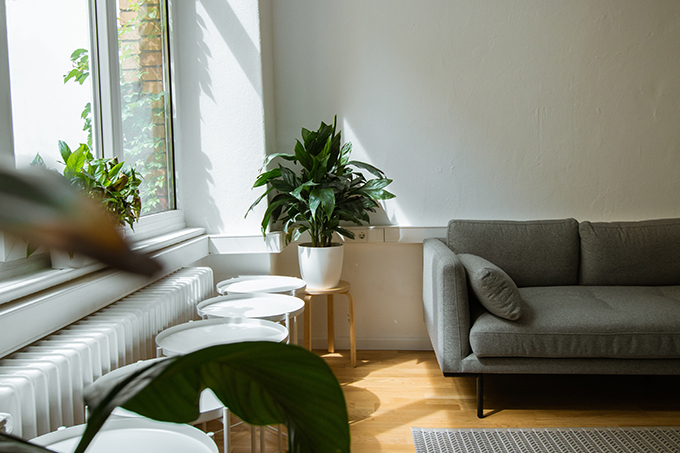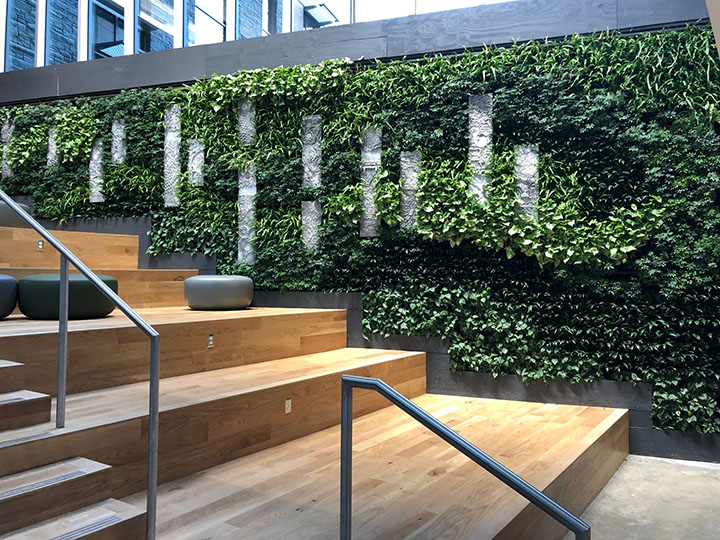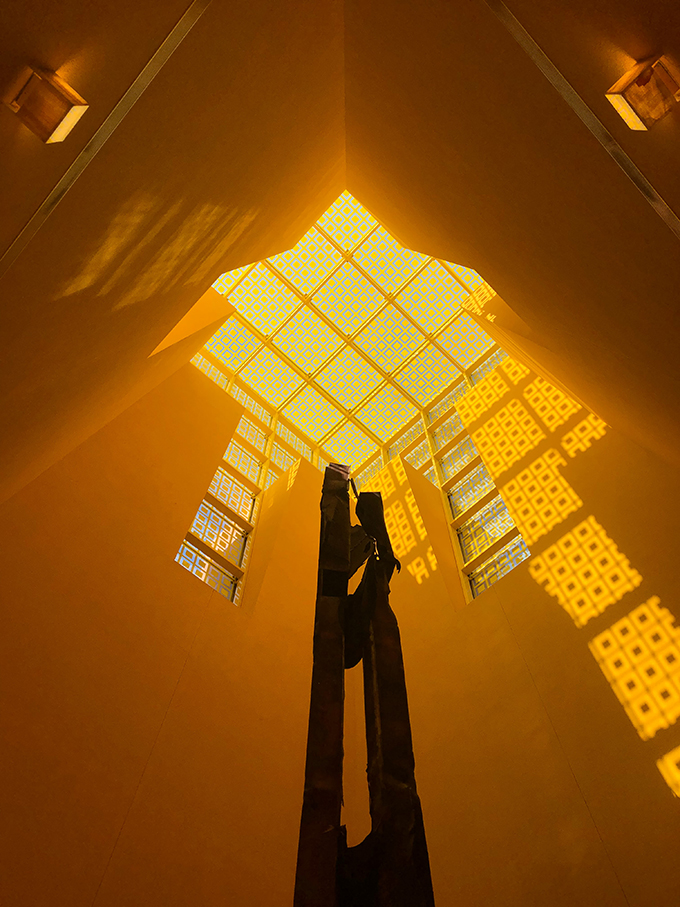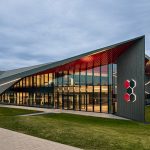
If you’re working on designs for a new office building, or if you’re just thinking about constructing a unique home, you may want to consider implementing more “natural” features—especially if this is going to be a space for working, studying, or participating in important activities. Modern architecture utilizes a lot of steel, reinforced concrete, and an emphasis on horizontal and vertical lines; while these have a beautiful aesthetic when employed properly, they don’t give you the same feeling you’d get, say, in a forest, surrounded by trees.
Contrasting with this sleek aesthetic, we can look at the green, living walls created by GSky Plant Systems. Georgetown University, Universities at Shady Grove, and multiple other schools have taken to transforming their walls with live plants; it’s a move that makes the environment seem more welcoming (while also more unique), and one that softens the cold harshness of some modern architectural features.
Other forms of architecture are evolving specifically to try and incorporate more of the natural world in a seamless and inventive way. For example, a technique known as passive daylighting is emerging to better capture and distribute daylight throughout a home or building.
The Benefits of Natural Scenery
The “beauty” of natural features like living green walls and big, open windows can be debated, but the productivity benefits are hard to ignore.
Let’s start by considering the benefits of being surrounded by plants and greenery:
- In multiple studies, workers and students in environments with plants tend to be more productive than their counterparts. Different studies have found a productivity increase of somewhere between 10 and 15 percent. There are competing theories for why this increase exists, but it is measurable.
- Plants take in carbon dioxide and emit oxygen, meaning if you introduce live plants to a given environment, they can reduce CO2 levels in the air, resulting in higher air quality. There’s also some evidence to suggest that plants could have a slight filtering effect, reducing the levels of dust, bacteria, and mold in the air. With better air quality, human beings have a better subjective feeling of wellness.
- When people are surrounded by straight lines and concrete, it’s hard to feel especially inspired; creativity can be hampered by functional, minimalistic buildings. You can compensate for this by hanging art on the walls, playing music, or going somewhere else for inspiration, but building plants into the architecture can stimulate creativity in a novel way.
- Noise reduction. Due to their irregular shape, plants can even have an effect on reducing ambient noise. Echoes from perfectly flat walls can be muffled by the presence of hanging greenery, and plants throughout a facility can do the work of softening noises from other sources.
A Closer Look at Natural Light
Of course, there are some major benefits associated with having more natural light in an interior environment as well, including:
- Better mood. Being exposed to more natural light is associated with an elevated mood, both short-term and long-term. People in the presence of bright natural light tend to be happier than their peers, resulting in better social interactions and in many situations, higher productivity. Additionally, exposure to natural light can stave off depression and other mental health issues.
- Better sleep. Natural light is one of the biggest variables in regulating our natural sleep and wake cycles. When we’re exposed to a sufficient amount of natural light during the day, we tend to sleep better at night. This has a recursive effect, reinforcing positive sleep cycles. And with better sleep comes better mood, higher productivity, and reduced susceptibility to illness.
- Vision, vitamin D, and other benefits. Natural light has a host of other benefits for the mind and body as well; exposure to sunlight improves the intake of vitamin D, and regular exposure can lower the risk of eye strain and permanent eye damage—especially in children.

Finding Opportunities for Natural Architecture
There are many ways to incorporate more natural elements in a given design, including more glass to let in natural light, better-positioned windows to direct that light, plants, fountains, and other installations, and of course, more open spaces where people can enjoy the outdoors in all their glory. Once constructed or installed, these features have the potential to significantly improve the quality of life of anyone and everyone involved with the building. We’ll likely see a rise in popularity of these features, as technology enables even more incredible work, and as demand for natural features grows.





